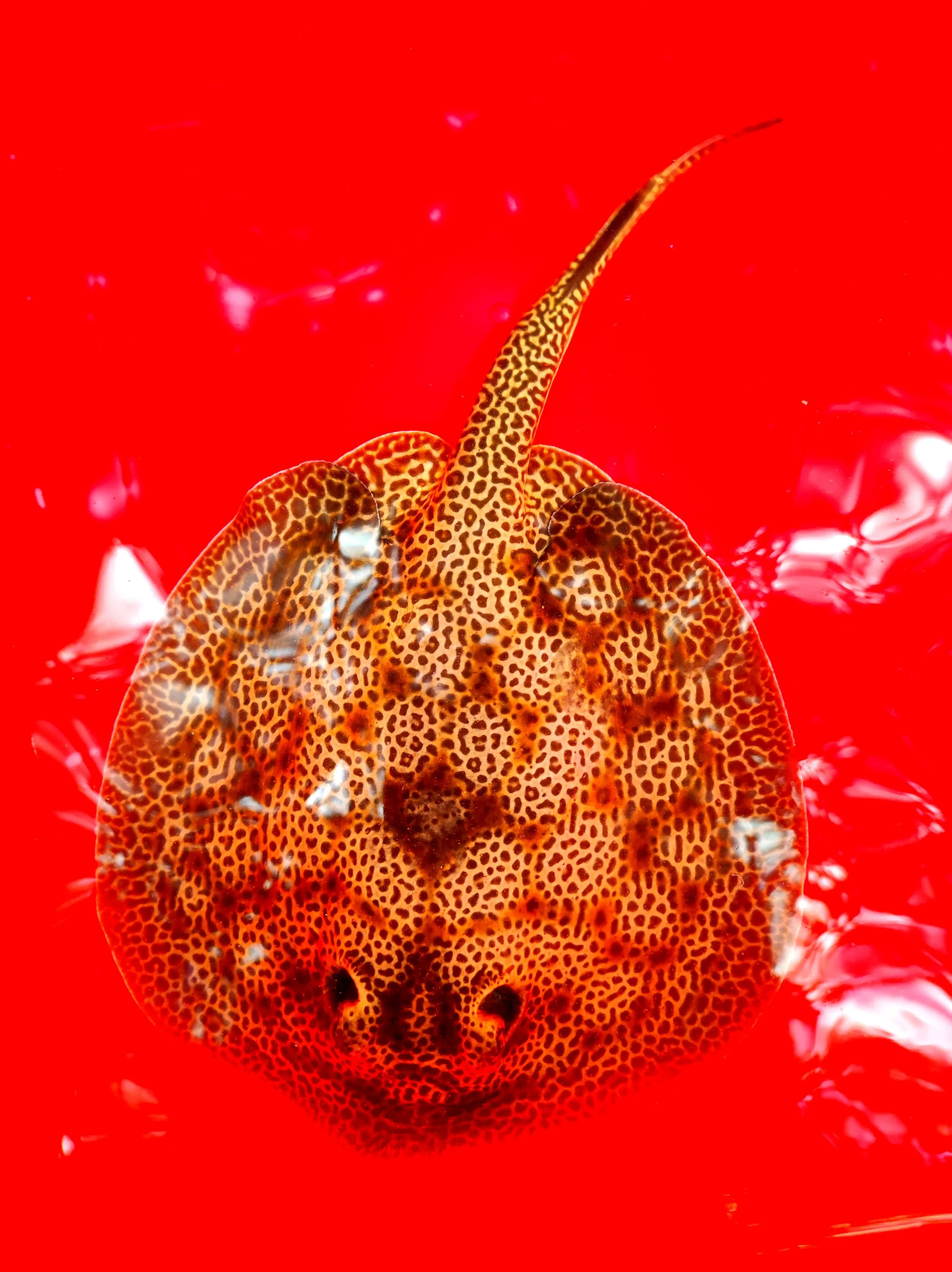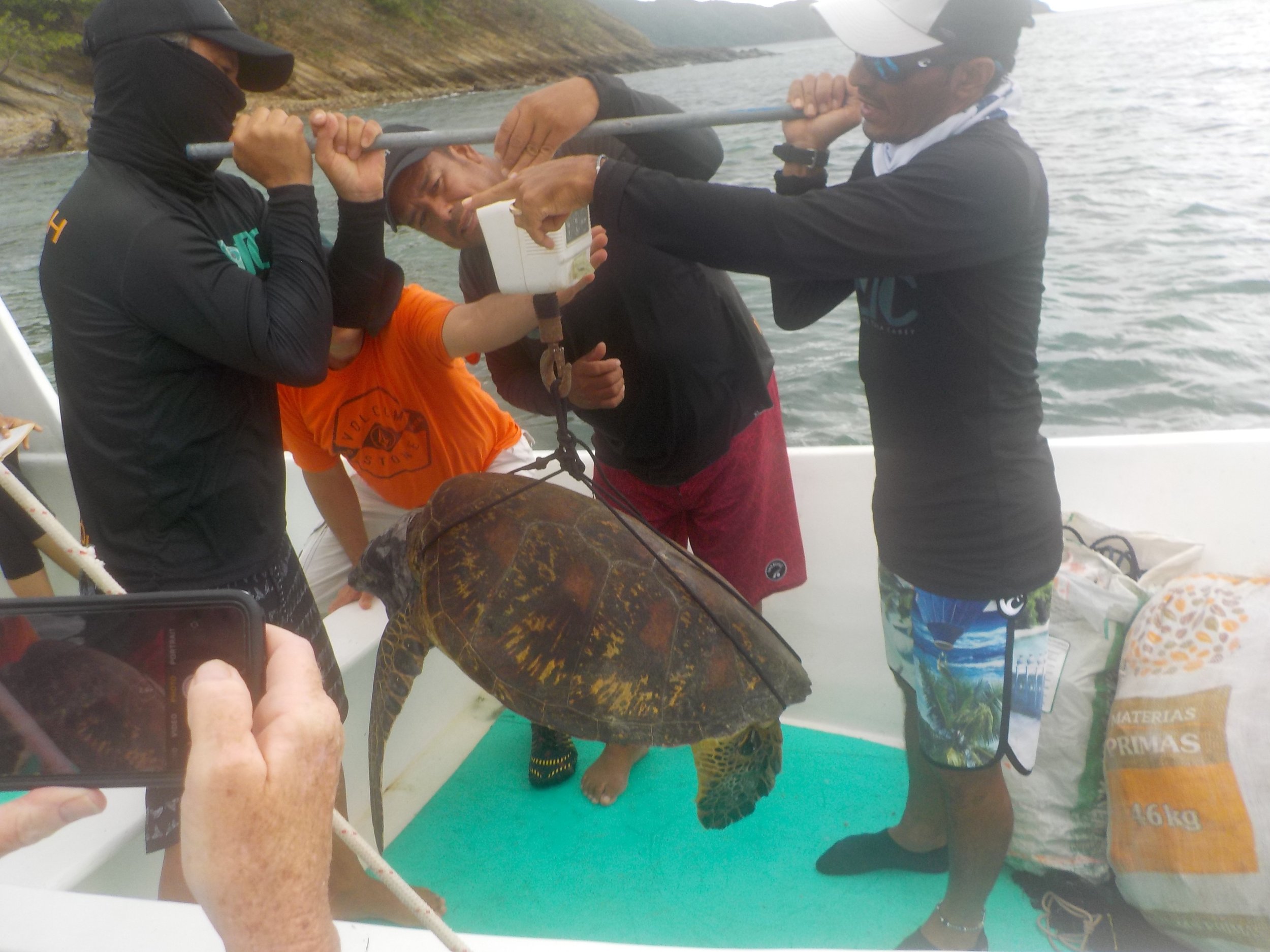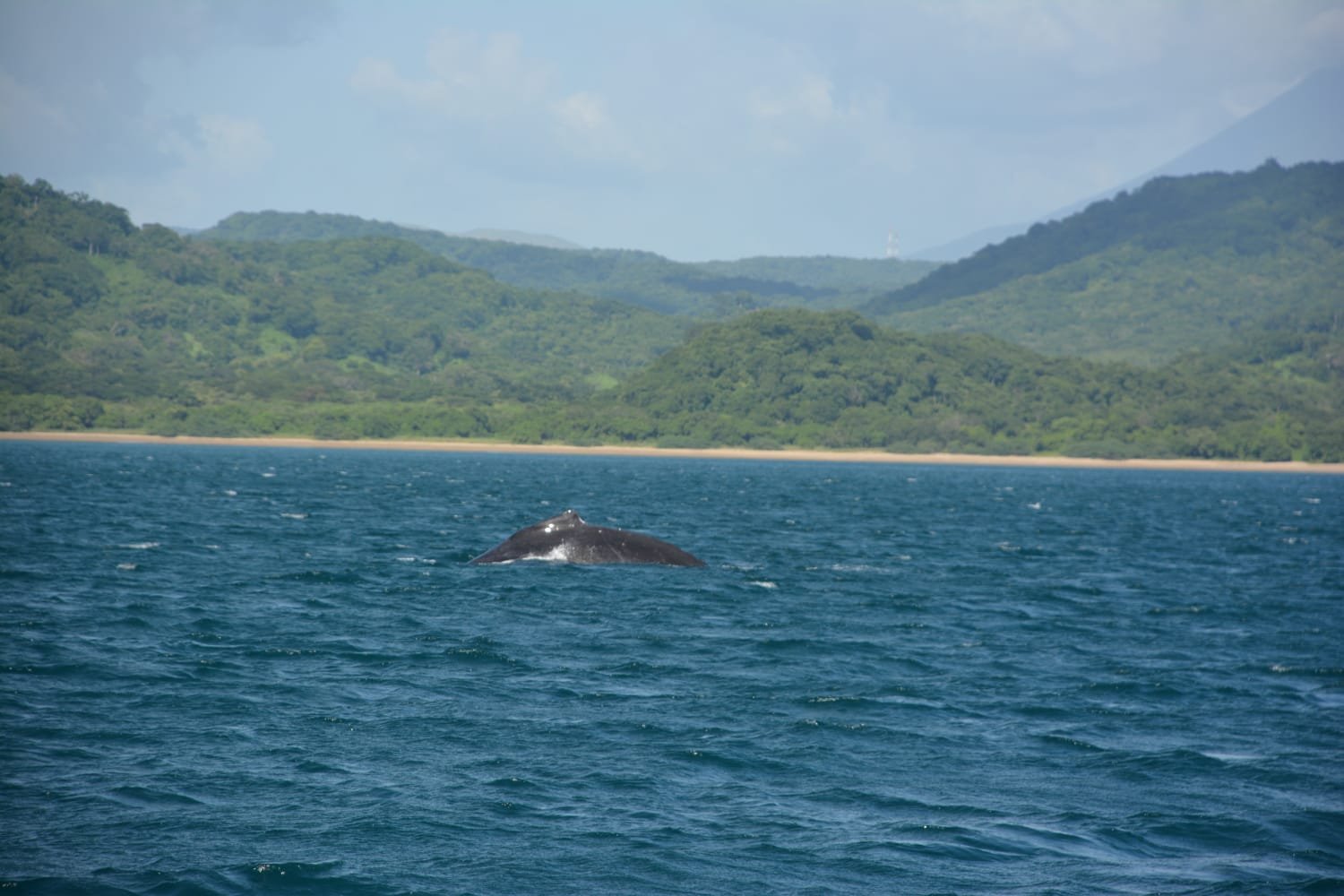Exploring Costa Rica’s Wildlife In El Jobo
We started our trip from Costa Rica’s Liberia Airport on a sunny day in August despite the forecast saying it would be a rainy week. Once our group participating on our Costa Rica Wildlife Research trip were all together, we headed to El Jobo with Lis, our local EcoTeach guide and our driver, a very pleasant 1.5 hour trip. Shortly before arriving to El Jobo we made a quick stop in the great viewpoint of Bahia Salinas, we could also see Nicaragua at the end of this huge natural bay. Then we took our private bus to finally get to El Jobo and to our hotel.
Photo of northwestern Costa Rica, credit Liseth Alfaro
We stayed at Casa Mariquita which has cabins going up a hillside, some with great views to the ocean. After everyone was settled in, we went to have dinner with a local family where we were going to eat all our stay there. After dinner we joined Ricardo with that our partner Equipo Tora Carey (ETC) for a short walk to check a hawksbill nest that was expected to hatch during the trip. Despite the fatigue, nobody wanted to miss this opportunity. We drove for 5 min to get to Playa Rajada, a beautiful sandy beach on a hidden corner of the Pacific Ocean. With thunder in the ocean lighting our path and with our local guide's advice, we decided to walk barefoot and feel the warm sand under our feet.
The second morning, we went to Manzanillo beach, a short 10 min walk. Once there Ricardo, one of the founders of Equipo Tora Carey, explained to us the work they do monitoring rays 3 times per week. Before ETC started working in this area, only one species of ray was reported; so far, they have now more than 20 species identified just at the 6 beaches they are studying. Ricardo also explained to us what to do if we see a ray, how to capture them, and what to do when we bring them to the shore. Then we started snorkeling around the area looking for these fascinating animals. At the end of the activity we captured 4 rays, and Sam, one of our group captured one on her first try! We learned a lot about rays, how to manipulate them, and how beautiful they are.
Ray research, credit Sara Whicker
Credit Liseth Alfaro
At noon we headed to have lunch and talk with Mathilde, part of ETC, about how the organization started, how the community is involved in all the activities, and the great work they do with turtles, rays, parrots, and education. After lunch we decided to spend our free time at La Rajada beach; part of the group decided to just relax and take a nap on the beach and the other part went for a short hike to Playa Rajadita, the next beach and to the viewpoint that is in between. (photos) In the late afternoon, part of the team joined Mathilde for the parrot’s research activity, which is done on the porch of her house. That night we did a beach patrol with Ricardo and saw a nesting olive ridley and the last hatchling emerging from a nest.
The third morning we started with an early breakfast and then headed to Matapalito beach, a marine management area adjacent to Santa Rosa National Park about a 45 min boat ride awa across the Gulf. During the ride we saw mating turtles, rays, and many humpback whales jumping at the distance. ETC conducts in-water turtle research in a feeding area of the gulf, where the team caught turtles to study them and collect important data. We were not lucky with the net, but Mathilde caught an adult green turtle. With Marlon, the guide of the ETC team we measured, weighed, and checked the turtle. They also placed a PIT tag and metallic tags and finally we took a blood sample from the beautiful female. Happy to complete the duty, we had lunch at the boats before going back to Manzanillo, this time under the rain.
Nesting olive ridley, credit Samantha Pfeffer
Green turtle being weighed, credit Amy Disselkamp
On that night’s beach patrol, we checked a nest in El Jobo beach and found 49 olive ridley baby turtles. Since at this beach there is a big resort (Dreams Las Mareas) with many lights on the beach that can confuse the hatchlings, we had take them to nearby El Coquito beach to release them to make sure they did not head inland towards the lights.
On the fourth day, we had activities with the local community. We started with a ceviche workshop where everyone was involved doing part of the process of cooking the seafood in lime juice to eat for lunch. Then we had a soap workshop, where the local women showed us how to make our own soaps to bring home with us. We also visited a recycling center where women from the community work and live from this activity. That night, the patrol team split in 2, one walking La Rajada beach and the other did the long patrol up to La Rajadita. We didn’t find any turtles but we had an amazing view of a clear sky full of stars, walking on this lovely beach with bioluminescence in the waves.
After breakfast on the fifth morning, we visited a bat cave, taking a short trail along the cost departing from Manzanillo beach. Walking on the most ancient rocks of Central America, in this area we saw some of the first geological parts that emerged when the isthmus was formed due to volcanic activity and lifting of the ocean floor by subduction of the Cocos plate under the Caribbean plate 60 million years ago. The sky was blue, the water was pristine, and the amazing rocky formation contrasted with the luxurious green of the vegetation put a smile on our faces the whole time.
Credit: Mathilde Giry
That afternoon, when we got back to the beach to board the sailboat for the whale watching trip, Liz pointed out a group of capuchin monkeys, eating mangos, and hanging out just a few feet from us. After this, we boarded the boat, a 33 foot sailing boat with Mathilde and Marlon as the crew. After around 30 minutes, we saw a stream of water emerge in front of the boat; not far from us was a humpback whale! The crew turned to approach the whale and then we spotted another whale to our right; it was a magical spectacle.
After a few minutes, the whales submerged and we lost sight of them. By then we remembered that we were starving and turned around and went to dock around Isla Muñeca, (Doll Island.) Mathilde prepared a lovely lunch in a very nice spot for snorkeling. After lunch we snorkeled and then sailed back to Mazanillo with a beautiful sunset, such a perfect last afternoon in El Jobo.
The last day of the trip, I left our group to visit Nancite, a turtle nesting beach that we support through our Billion Baby Turtles program (new post on that visit coming soon). The group with Lis headed to the Blue River Resort, a wonderful lodge with hot springs, gardens and more located near the Rincon de la Vieja National Park. The travelers chose their own activities that day, hiking or just hanging around the beautiful grounds of the resort. Our first trip to El Jobo was a great success, with our group working with many species of animals, seeing several turtles, and bringing important income to this community to continue its conservation and research efforts.
Credit: Liseth Alfaro








